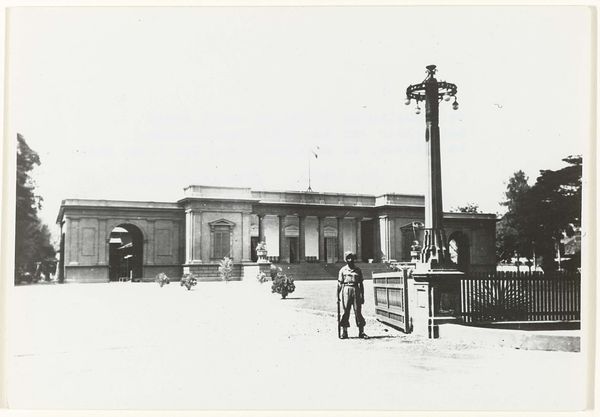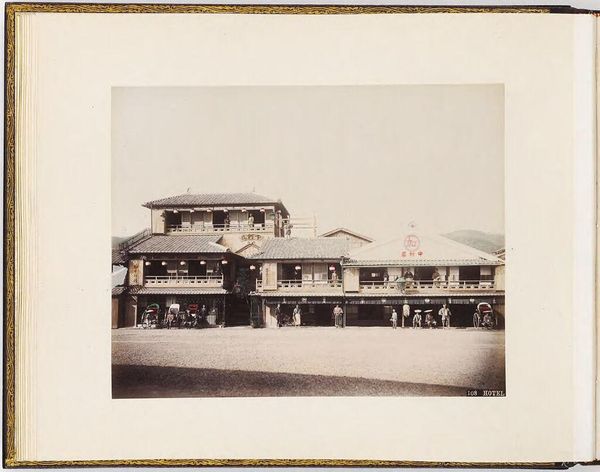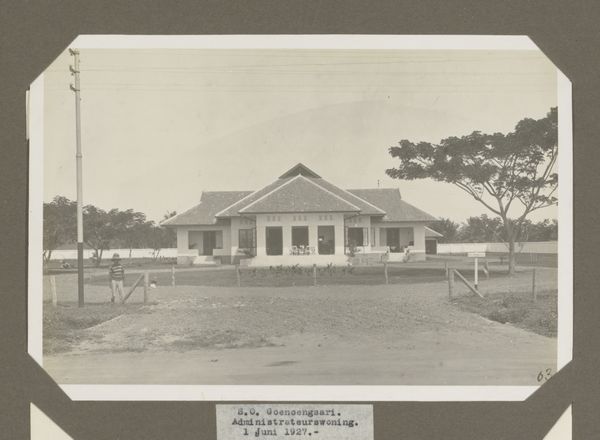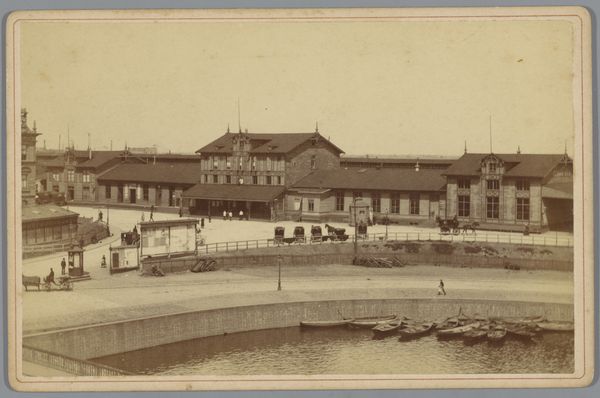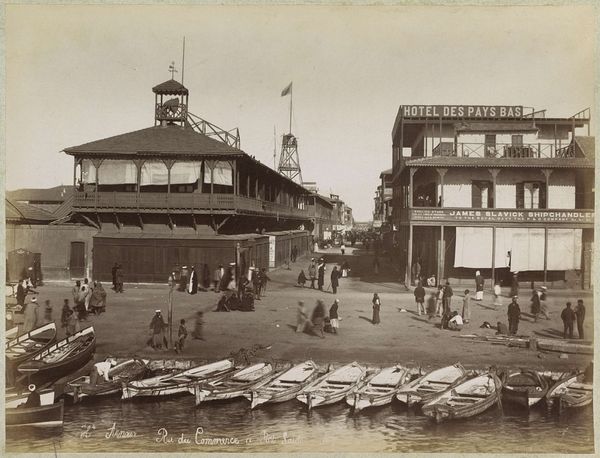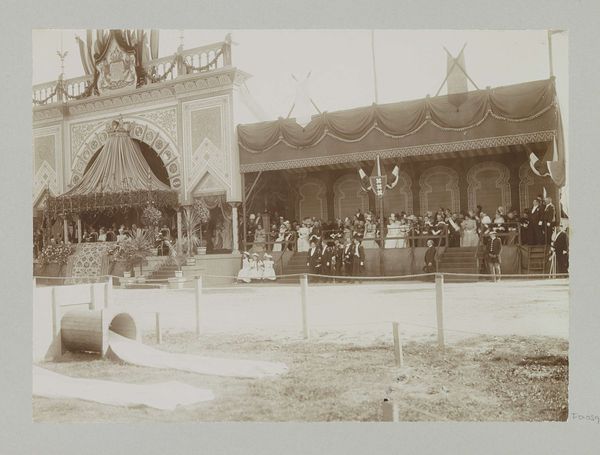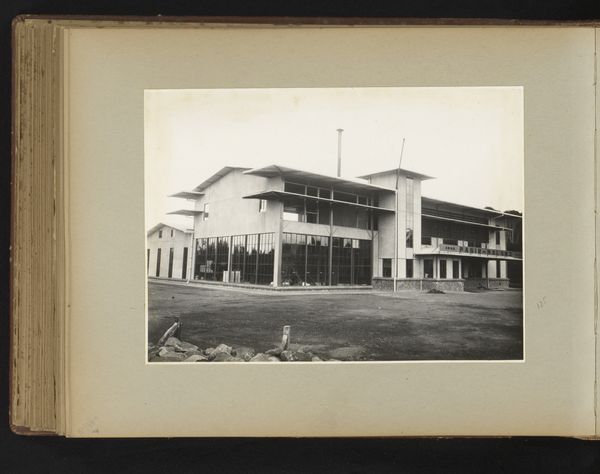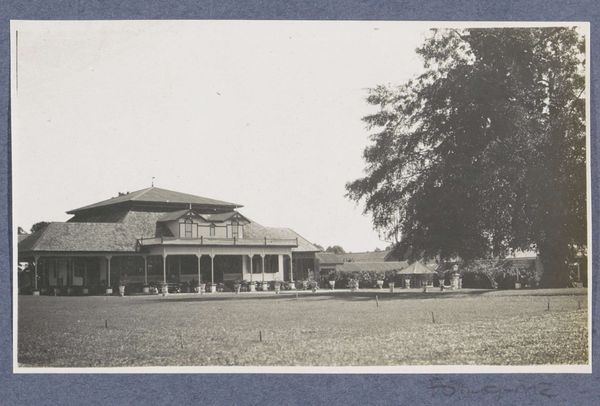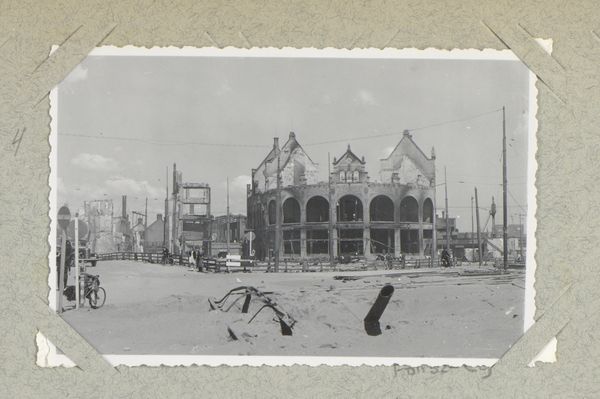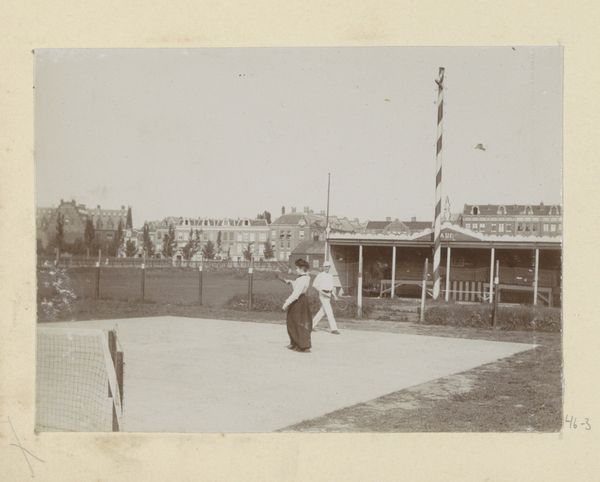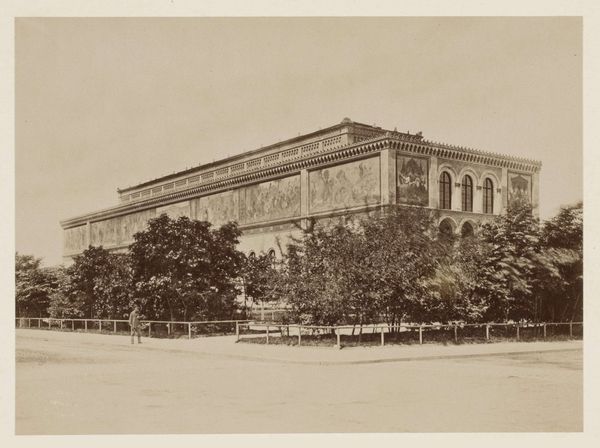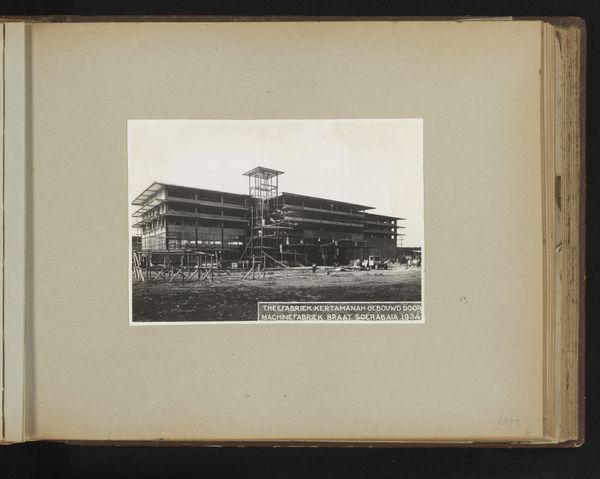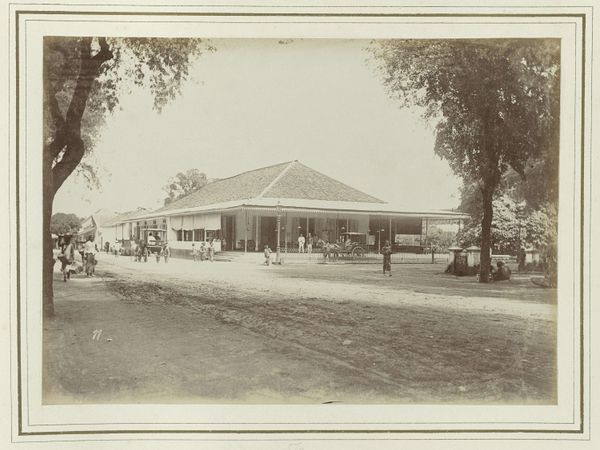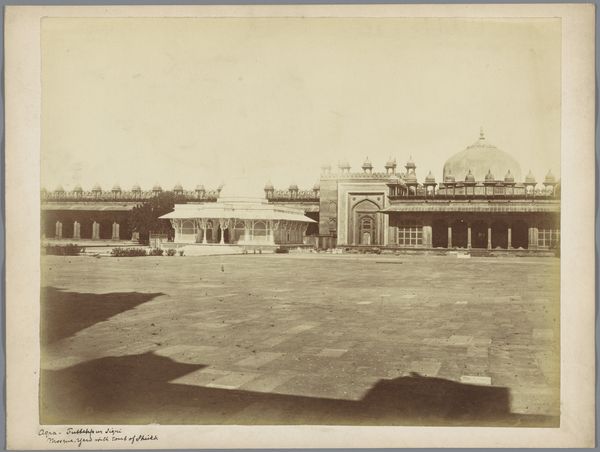
print, photography, gelatin-silver-print
#
print photography
# print
#
landscape
#
archive photography
#
photography
#
historical photography
#
gelatin-silver-print
#
cityscape
Dimensions: height 12 cm, width 16.8 cm, height 16 cm, width 22.2 cm
Copyright: Rijks Museum: Open Domain
Curator: This gelatin-silver print, titled "Bewaking door Nederlands Indische Marine van regeringsgebouwen," captures a scene of Dutch Marine security around government buildings in the Dutch East Indies between 1945 and 1946. The photographer is Anefo. Editor: There’s something stark about this black and white photograph. The buildings loom in the background, overshadowed by the soldiers guarding the area in the foreground, but it all feels…empty. Curator: It does convey a sense of unease. The photographic medium itself lends to the atmosphere. Gelatin-silver prints, common for their sharp details and tonal range, became vital to historical memory and documentation, serving as an objective window into past eras and carrying its associated implications of colonialism, authority, and the political turbulence that followed the end of World War II. The presence of soldiers triggers associations with war, security, and the instability that prevailed in the Dutch East Indies after the war. Editor: Structurally, the lines create this division between the subjects: the diagonal of the street directs the eye between the guards and buildings, literally dissecting the landscape of power. There's no explicit event captured. This image acts as more of an objective representation of this exact point of view at this moment, lacking any stylistic interventions that signal emotional bias or historical interpretation. Curator: That distance is telling, isn’t it? Photography held a position of unique evidentiary value in a time where political interests clashed. Each component in the image has potential iconic connotations. A guard, the governmental buildings, the city, and its inhabitants all signify social history in some way. It speaks to ideas of who can move freely and who is affected by limitations. The mundane city structures, juxtaposed with military activity, may point to the fragility of established structures under external forces. Editor: Yes, precisely! We perceive the contrast as an entry point to decipher its historical meaning: order, but on the precipice of chaos. The artist does well by capturing so much nuance in one simple image. Curator: Absolutely. Its composition offers a perspective that reveals a complex relationship between power, landscape, and the ever-present tensions of a world in transition. Editor: The medium offers a snapshot into this past condition that reflects back onto how the role of visuality, particularly in photojournalism, plays a critical function in narrating events, even decades later.
Comments
No comments
Be the first to comment and join the conversation on the ultimate creative platform.
